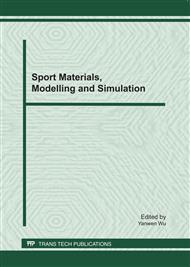p.780
p.786
p.790
p.797
p.803
p.809
p.815
p.820
p.826
A Study on Transition from Near Field to Far Field of Echoes from Underwater Simulated Targets
Abstract:
With the distance between sonar system and target enlarging, the underwater target transits from near field to far field. Based on planar element scattering similarity, a novel algorithm is presented in this paper. In this thesis, an underwater target model is set up and meshed with triangular planar element by using the software of Ansys. Due to the sonar system is in far field to every planar element, the matrixes whose elements are the planar elements target strength can be calculated. In the course of an underwater target transits from near field to far field, the matrix whose elements are the planar elements target strength is becoming more and more similar to that in far field. Thus the correlation coefficient between the above two matrixes can be used to analyze the transition of an underwater target. Numerical calculation are presented, and the results show that the underwater target scattering characteristics in critical distance approximate the characteristics in far field, but the target strength which is calculated in critical distance is also should be modified little.
Info:
Periodical:
Pages:
826-830
Citation:
Online since:
February 2011
Authors:
Keywords:
Price:
Сopyright:
© 2011 Trans Tech Publications Ltd. All Rights Reserved
Share:
Citation:


